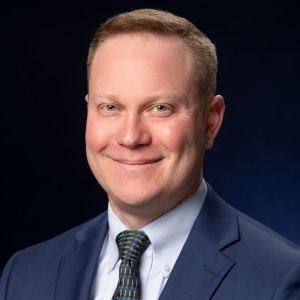When Pat Kressin becomes CEO of Milwaukee-based engineering and design firm GRAEF, it will mark the culmination of a years-long leadership transition shaped by intentional planning, internal transparency and an effort to minimize disruption across the company.
The transition represents the firm’s fourth broad leadership change since its founding. At the center of it is Kressin, who officially became president of GRAEF in January and is set to assume the CEO role following the planned retirement of current CEO John Kissinger next spring.
While transitions at the executive level are common enough in business, GRAEF’s recent changes have included not just the CEO role, but also the chief operating officer role and other senior leadership positions across departments. GRAEF refers to these as “generations,” and planning for the next one starts 15 to 20 years in advance.
Kressin joined GRAEF in 1995 and has served in several leadership capacities, including most recently as vice president of business development. The planning for this transition began in earnest about three years before Kressin was selected. The firm took a structured approach that included defining the process, determining who would be eligible to compete for the top positions, and documenting those steps.
“You really need to have a plan,” Kressin said. “You’ve got to ask yourself, what’s the process going to be? Who’s going to be allowed to compete for these positions? Is it open? Is it internal?”
That level of clarity was particularly important given the number of senior leaders involved in the transition. GRAEF has around 30 principals.
“Since we’re an ESOP, we spent a lot of time making sure that we have a plan in place to execute them, because that’s what we owe to all of our fellow employees, because they’re also owners in the firm,” Kressin said. “We can’t just say, ‘Hey, I’m done. I’m out and retired. Good luck guys.’ That’s not how GRAEF’s culture has ever been, nor will it be.”
While Kissinger will remain CEO during the official transition period, Kressin has already taken on much of the day-to-day leadership responsibility, helping guide the broader transition.
“I think it’s a good idea to have the CEO and COO change at the same time, because in order for me to be an effective CEO, I need to have the right person in that role,” Kressin said.
Ken Grebe and Brent PitcherIn May, Brent Pitcher was named the incoming chief operating officer, succeeding longtime COO Ken Grebe, who will retire after more than four decades at the firm. Pitcher, like Kressin, is a longtime GRAEF employee and was selected after an internal process. He joined the firm in 2000 and has held several leadership roles, most recently overseeing the infrastructure group in Milwaukee.
Historically, after a new CEO was selected at GRAEF, they would appoint other key leadership roles. Kressin opted for a different approach, making those appointments competitive. That included the COO position as well as others like director of facilities and the head of GRAEF’s Madison office, according to Kressin.
The change was a deliberate shift informed by lessons from previous transitions in which some internal candidates who were passed over for top jobs chose to leave the firm. Kressin said avoiding that kind of fallout was a priority.
“I challenged our team, even not knowing I was going to be successful, that I wanted to make sure this process is above board and that people have equal opportunity, because I don’t want one of my fellow partners to leave the firm,” said Kressin. “So far, nobody’s left the firm, and that was a really important part of our process.”
To support the incoming leaders, GRAEF also built in time for outgoing leaders to provide mentorship and continuity. Several retiring leaders are still contributing weekly – between four and 12 hours per week – helping their successors settle into their new roles.
“We’re just transitioning a lot of people all at the same time,” Kressin said. “We wanted to make sure people were learning their new position, and we worked with the people who previously held those positions.”
Beyond internal planning, Kressin said the experience has influenced how he views leadership transitions more broadly, which GRAEF already has an eye toward.
“I’ve had multiple dinners with multiple leaders of companies, of people that want to sell their company, maybe looking for someone to acquire them,” he said. “Some of them are in positions where they have a good transition plan or options, and some have no options. Some are people at the end of their career and they’re trying to figure out how to keep their business alive, keep their employees employed. Those are really complicated things, and if you start those conversations when you’re 65 years old, you don’t have very many options left.”
Author
-

Elizabeth Morin is a writer based in Virginia Beach. She is passionate about local sports, politics and everything in between.
Have any Virginia Beach-related news published on our website? Email us at admin at thevirginiabeachobserver.com.
View all posts



